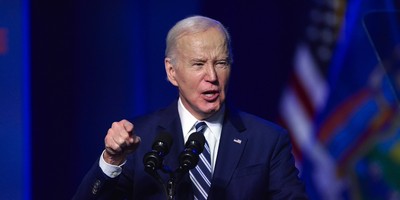PADUCAH, Ky. (BP) -- On St. Patrick's Day one year, I donned some green clothing for the traditional "wearin' of the green." Then I fastened to my sweater a shamrock pin and the identifying symbol of the O'Connor clan. I thought to myself, "What are Baptists to make of St. Patrick?"
Unfortunately, much of the popular lore about Patrick is largely untrue. For instance, the story about Patrick using the shamrock to demonstrate the doctrine of the Trinity appears to be a relatively modern legend. Patrick believed in the Trinity and cited this belief in his own writings, but he himself did not mention using the shamrock this way.
Patrick also is credited with driving the snakes out of Ireland, but this unlikely tale originated at a later time, too. Two centuries before Patrick was born, the Roman geographer Solinus recorded that Ireland was devoid of snakes.
What we do know about Patrick comes from two of his own writings, penned near the end of his ministry in the late fifth century. These works, written in a rough provincial Latin, "The Confession of St. Patrick" and "Letter to the Soldiers of Coroticus," reveal Patrick was a dynamic missionary and Christian leader. His personal testimony was very inspiring. Although Patrick's grandfather Potitus was a pastor and his father, Calpurnius, was a deacon, Patrick said that nonetheless in his youth he "did not know the true God."
At age 16, Patrick and several other Britons were carried away from Britain by a group of marauding warriors that raided his community, Bannavem Taburni. They were sold into slavery across the sea in Ireland, where Patrick labored for six years as a shepherd. Although he was isolated from any church or clergyman, Patrick accepted Christ as his personal Savior. Patrick wrote, "There the Lord opened the sense of my unbelief that I might at last remember my sins and be converted with all my heart to the Lord my God."
Recommended
Shortly after his salvation, Patrick said he received a vision from the Lord, warning him to flee Ireland and informing him a ship had been prepared for his escape. Patrick eventually made it back home to Britain, where he rejoined his family and later was ordained as a deacon.
Nevertheless, Patrick was not destined to remain in Britain. He said he received another vision, in which an Irishman brought him numerous letters that implored him to return to Ireland. One of the letters read, "We ask you, boy, come and walk among us once more." Patrick submitted to God's call to return to Ireland.
Patrick's plans, however, needed the approval of the local British pastors who Patrick called "the seniors." At first he was turned down because of an unnamed sin he had committed in his youth, but later he was ordained as a bishop and sent to Ireland. Patrick felt accountable to "the seniors" for his financial dealings in Ireland, and in part the purpose of his "Confession of St. Patrick" was to show how he managed his finances in his ministry.
Although legend says Patrick's mission was sponsored by the papacy, Patrick himself never mentions any holder of the papal office. In fact, Patrick seems to answer only to "the seniors." This oversight by "the seniors" tended to be more symbolic than real, and he apparently experienced major conflicts with some of them. Nevertheless, it is clear from Patrick's narrative that he, rather than "the seniors," remained in charge in Ireland.
Patrick understood his primary mission was to "preach the Gospel to the people of Ireland," and he performed his mission well. His preaching and ministry, aided by the Holy Spirit, resulted in the conversion of thousands of the Irish to saving faith in Christ. He also ordained others to help him in his work, influenced the local Irish chiefs to promote Christianity and encouraged the Irish themselves to financially support his ministry.
Similar to what we find today in international missions, Patrick produced his greatest gains in evangelism among the Irish women. They became strong supporters of his ministry in terms of enthusiasm, service and giving. Conversely, for the sake of propriety, Patrick returned many of their gifts.
Patrick's advocacy for his newly baptized female converts even led him to challenge the roving raiders who plagued the British Isles in the middle and late fifth century. By this time, the Roman legions once stationed in Britain had long ago been recalled to the continent. Consequently, the British Isles were overrun by gangs of Germanic and Celtic warriors. One of these bands, under a leader named Coroticus, had butchered a number of Patrick's newly baptized converts and had enslaved the surviving women.
Patrick sent subordinates to recover the women, but the soldiers of Coroticus only jeered at them. Patrick's "Letter to the Soldiers of Coroticus" was addressed to this warrior band. In it, Patrick again appealed for the return of the female captives and warned Coroticus and his soldiers they faced the wrath of God if they did not repent and comply. Given that these men were violent and well-armed, Patrick's letter of "righteous anger" shows he thought nothing of putting himself in harm's way for others.
Although history does not record what happened after his letter was delivered, two features of Patrick's ministry are clear.
First of all, even late in his ministry, the success of Patrick's work appeared incomplete. Although legend states he converted the entire island to the Christian faith, it seems obvious from the Coroticus incident that plenty of spiritual darkness remained.
Secondly, we can observe Patrick's compassion for his newly converted charges. He truly loved the pagan Irish enough to bring the Gospel message to them, and once they became part of the Christian community, he was willing to endanger himself to be their advocate.
What are Baptists to make of St. Patrick?
Patrick is a remarkable role model for all Baptists who value the Great Commission. As Patrick himself proclaimed, "I share in the work of those whom He called and predestinated to preach the Gospel among grave persecutions to the end of the earth."
Much the same can be said of modern Southern Baptist missionaries and those who support them.
Stephen Douglas Wilson is dean emeritus and chair of the history department of Mid-Continent University in Mayfield, Ky., and a member of the SBC Executive Committee. This column first appeared in Baptist Press in 2008. Get Baptist Press headlines and breaking news on Twitter (@BaptistPress), Facebook (Facebook.com/BaptistPress ) and in your email ( baptistpress.com/SubscribeBP.asp).
Copyright (c) 2013 Southern Baptist Convention, Baptist Press www.BPNews.net

























Join the conversation as a VIP Member